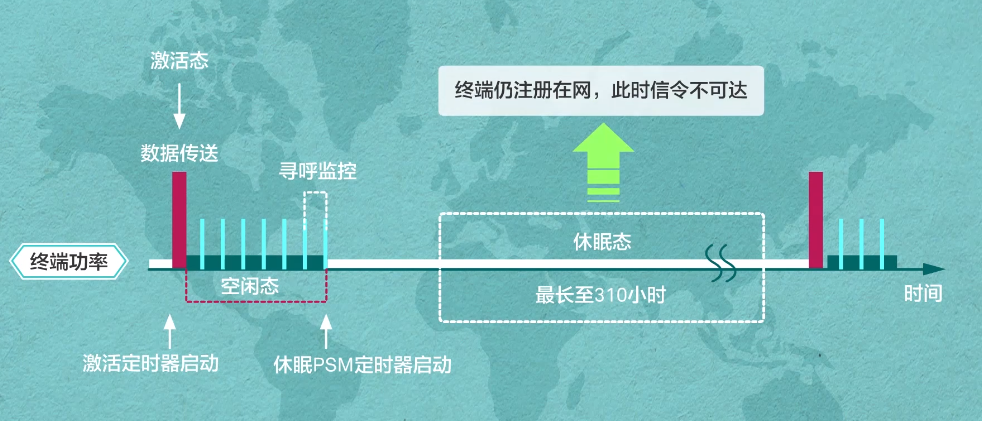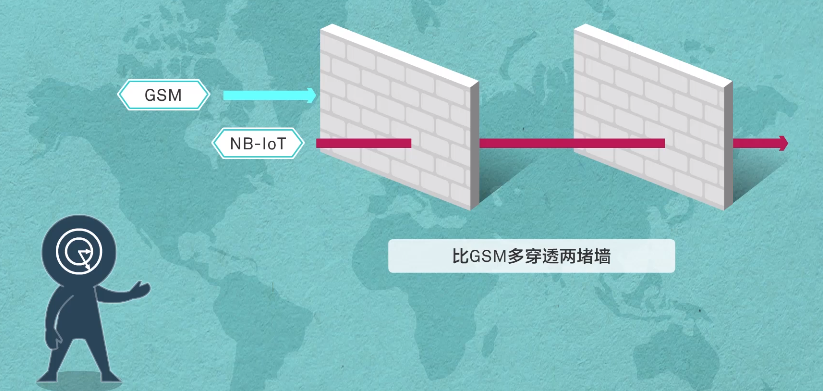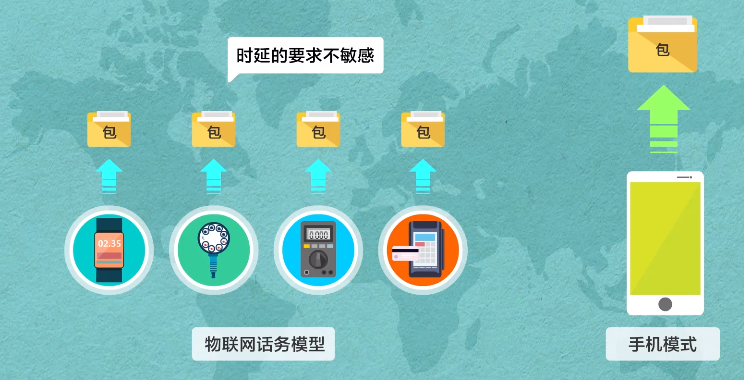Everyone has always heard about the major features of NB-ioT, including ultra-low cost, ultra-low power consumption, ultra-strong coverage, and ultra-large connections. It is estimated that some people are a little confused about the concept of this feature, and there is no detailed explanation of these four features on the Internet, so this article will give you a detailed explanation of the four features of NB-ioT .
4 key features of NB-IOT
(1) Ultra-low cost
(2) Ultra-low power consumption
(3) Super coverage
(4) Extra large connection
ultra low cost
The ultra-low-cost features of NB-ioT are based on the Single RAN solution provided by Huawei. Supports upgrades and transformations on current network equipment. Thereby reducing network construction and maintenance costs. And the NB-IOT chip is specially designed for the Internet of Things, only for narrowband and low speed. In response to the needs of the Internet of Things, it only supports single antenna and half-duplex mode. It also simplifies signaling processing and greatly reduces chip prices. That’s why NB-ioT has the characteristic of low cost.
Ultra low power consumption
Let’s learn about the ultra-low power consumption characteristics of NB-IOT. The communication requirements of IoT devices are different from those of mobile phones. The IoT usually only sends data packets uplink, and whether to send data packets is decided by itself. There is no need to standby at any time and wait for calls from other terminals. For small packets and occasional IoT application scenarios, NB-IOT has designed two unique power-saving modes, PSM and sDRX.
(1)PSM mode
Among them, the PSM mode is the most power-saving. (In the PSM mode, the terminal sends data packets when it is in the active state, and then enters the paging monitoring state to monitor whether the network side has sent messages.) In addition, in order to reduce power consumption, paging monitoring is added of duration. PSM mode inserts an idle state into paging monitoring. After paging monitoring, the terminal device will enter sleep state. It will no longer perform any communication activities, and will not wake up until there is a data reporting request. Then send the data.

When sleeping in PSM mode, the terminal is still registered on the network, but signaling is unreachable at this time. Therefore, when the terminal is in PSM power saving mode, not all control instructions issued by the business platform reach the terminal in real time. Downstream control instructions, Need to be cached in the ioT platform.
According to the behavioral habits of IoT terminals, the terminal will be in a dormant state 99% of the time. Making the power consumption very low. This achieves ultra-low power consumption of the device.
(2)eDRX
Extended discontinuous reception, corresponding to DRX.
DRX technology refers to the discontinuous reception of paging messages, because decoding paging communication messages consumes a large amount of energy. Therefore, DRX is also an important method for wireless communication terminals to save power.
eDRX is expanded on the basis of DRX to further extend the sleep period of the terminal in idle mode and reduce unnecessary startup of the receiving unit. For PSM mode, it greatly increases the downlink accessibility.

For the two power saving modes of PSM and eDRX, NB-ioT terminals can be used independently, and their application scenarios are also different.
Scenario 1: Business in smart water meters
Water meters with NB-IOT will work in PSM mode
Scenario 2: Shared bicycles, logistics and distribution
NB-ioT terminals will work in eDRX mode
NB-ioT terminals can also use eDRX and PSM at the same time. When the activation period of PSM is greater than the eDRX cycle, the terminal device can enter the eDRX cycle to minimize power.
Super coverage
After understanding the ultra-low power consumption characteristics of NB-ioT, let’s learn about the super coverage characteristics of NB-ioT. In view of the deployment characteristics of the Internet of Things, the existing access technology is not enough to meet the deep coverage requirements. NB-ioT is specially designed for Designed for IoT especially LPWA connectivity.
Through time domain retransmission technology and improved power spectral density, the MCL has a 20dB gain improvement compared to GSM and LTE networks. So behind the characteristics of super coverage, there are several concepts and technologies mentioned, as follows.
MCL (Max Couping Loss) – Maximum coupling loss can measure the coverage. The larger the value, the greater the coverage. Usually the MCL of LTE is 142.7. The MCL of GSM is 144, while the MCL of NB-ioT can reach 164. This 20dB gain allows NB-ioT to penetrate two more walls than GSM. This part of the gain is achieved through power spectral density improvement and repeated transmission.

NB-ioT transmits data through 15kHz subcarriers, which can increase the gain by 11dB compared to 180kHz bandwidth transmission. Introducing a coding method of repeated transmission to improve transmission reliability when channel conditions are poor through repeated transmission. It can increase the downlink gain by 9dB and the uplink gain by 12dB.
NB’s super coverage means that fewer stations can cover a wider area and have stronger penetration, which can penetrate floors to reach basements. This will enable hidden-location equipment such as water meters, as well as devices that require wide coverage. Businesses such as repeat tracking are applied.
Extra large connection
The base station of NB-ioT is designed based on the Internet of Things model. The traffic model of the Internet of Things is different from that of mobile phones. Its traffic model is that there are many terminals, but the packets sent by each terminal are small, and the packets sent are not sensitive to delay requirements.

Based on the traffic model of the Internet of Things, more user access can be designed and more user contexts can be saved.